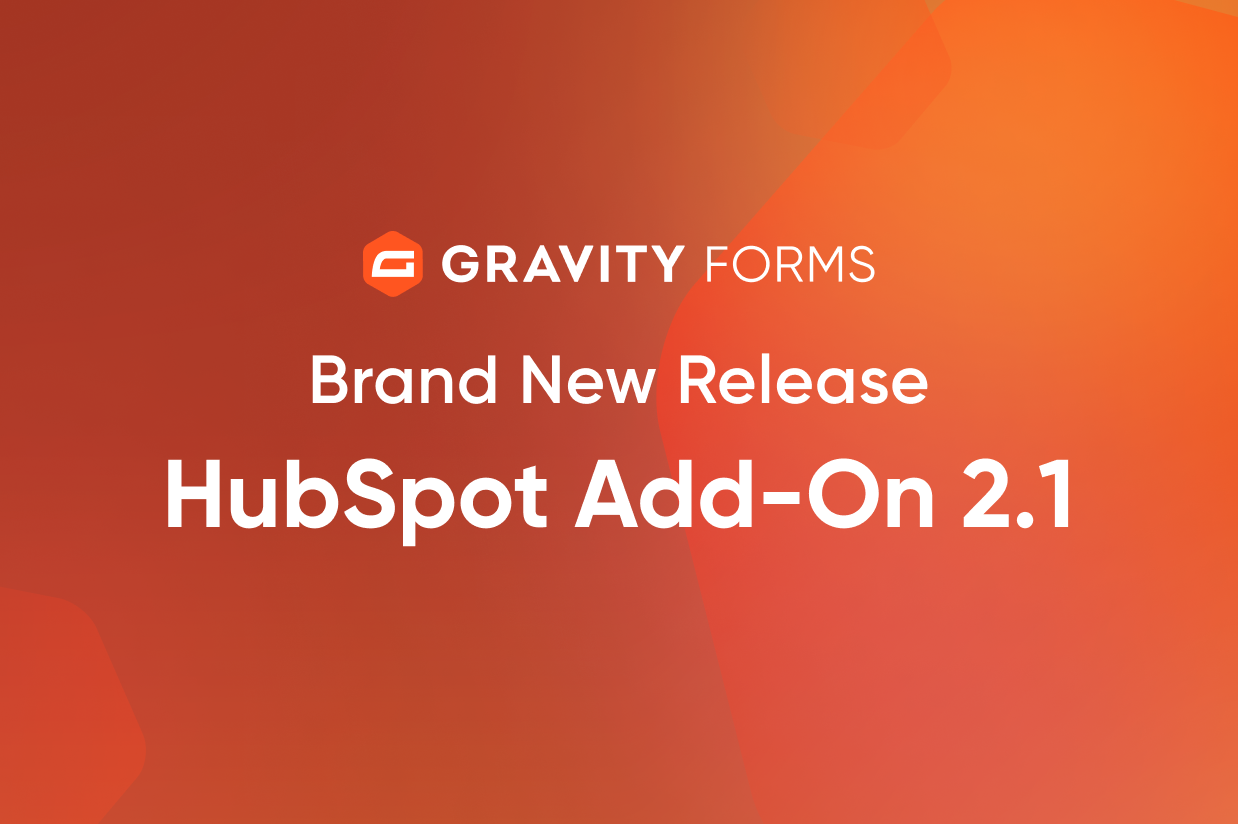Brand New Release: HubSpot Add-On 2.1

Gravity Forms is pleased to announce an update to our HubSpot Add-On. Version 2.1 contains several fixes, including…
- Updated the additional contact field settings to use the generic field map instead of the deprecated dynamic field map field type.
- Updated to use the v3 Owners API before v2 is sunset in August 2024.
Connect Your Forms to a Powerful Marketing Platform
HubSpot is a multifunctional customer relationship management (CRM) platform with free and paid plans. It’s designed for organizations of all sizes and can be used as your marketing, sales, and service hub.
If you want to engage in marketing across multiple platforms, including email, social media, and paid ads, as well as handle customer and client data more efficiently, HubSpot is the tool for you!
HubSpot and Gravity Forms
HubSpot integrates with many third-party software and services, including Gravity Forms and WordPress.
By using the Gravity Forms HubSpot Add-On, you can easily send form entry data from your website to your HubSpot account. From there, you can…
- Store and manage user data and contact details more efficiently.
- Automatically send out email communications, with form entries triggering mailing list sequences.
- Understand your audience better by getting an insight into their behavior on your site.
You can learn more about using HubSpot with Gravity Forms in this article — How to Use WordPress and HubSpot to Grow Your Business.
HubSpot Add-On v2.1 Changelog
- Updated the additional contact field settings to use the generic field map instead of the deprecated dynamic field map field type.
- Updated to use the v3 Owners API before v2 is sunset in August 2024.
- Updated the minimum Gravity Forms version to 2.7.1.
- Fixed a JavaScript error on the feed configuration page with Gravity Forms 2.8+.
